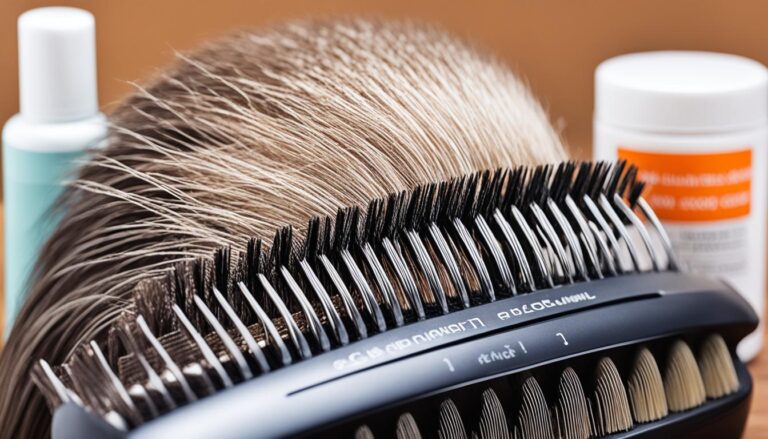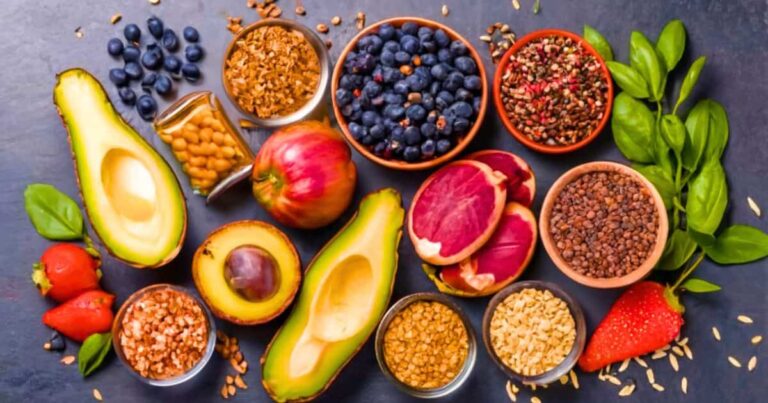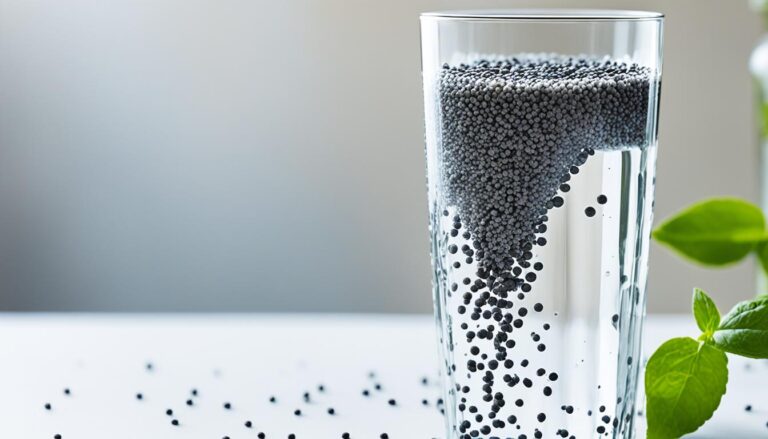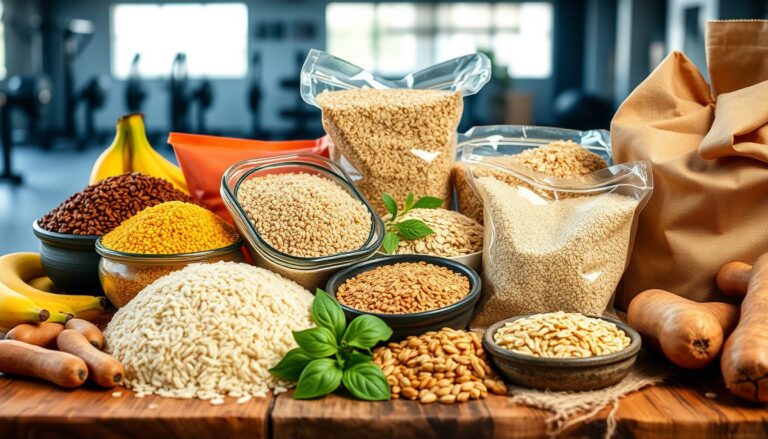Can one simple swap protect the texture, flavor, and rise of your favorite recipes? That question guides this practical how to for home cooks across the United States.
This guide explains why a single solution rarely behaves like eggs in every dish. We break down when an egg adds structure, lift, moisture, or emulsification and show the right option for each job.
Expect clear choices for cakes, cookies, and quick bakes plus deep dives on aquafaba, flax, chia, chickpea swaps tofu based solutions, and commercial liquid products. You’ll learn scaling tips for one serving or a full batch.
Practical, safe, and budget friendly: most swaps use pantry items, short steps, and let you taste and tweak batter before baking. Later sections include ratio charts, whipping cues, and equipment tips to keep results reliable.
Key Takeaways
- There is no universal substitute choose by role structure lift moisture emulsify .
- Find quick, pantry friendly recipes and commercial options for different needs.
- Learn scaling rules for one serving or larger batches.
- Most swaps are safe to sample before baking for better seasoning and sweetness control.
- Later sections provide ratio charts, whipping resting cues, and troubleshooting tips.
Understand the role of eggs and how to replace their functions

Knowing whether a recipe needs lift, binding, moisture, or emulsification makes the swap simple. In classic American baking, eggs bind ingredients, trap air for rise, add moisture and fat, and help batters set as they bake.
Match the dominant function to the right option. For airy cakes and cupcakes, prioritize aeration and structure. For cookies and brownies, choose binding and moisture. Quick breads need balance: some lift but mainly stable crumb.
Measure carefully. Many swaps mix with water to form gels or slurries. Over hydration will weigh down cakes or make cookies flat. Use tablespoons or a cup measure so results stay consistent.
| Function | Best swap | Ratio | When to avoid |
|---|---|---|---|
| Lift aeration | Whisked aquafaba | 3 tbsp per egg | Delicate chiffon where stability matters |
| Binding | Ground seed gel flax/chia | 1 tbsp ground + 2.5–3 tbsp water | Very wet batters |
| Moisture tenderness | Applesauce or mashed banana | 1/4 cup per egg | Light sponge cakes adds pectin |
Use a quick checklist before you swap: which functions are critical, the desired texture chewy, tender, airy, and whether added flavor like banana fits the recipes. Start with one small batch to confirm results before scaling up.
Quick start: choose the right substitute for your recipe goal
Choose a replacement by focusing on the texture you want: airy crumb, chewy bite, or tender crumb.
For lift and lightness in cakes and quick breads
For maximum lift use aerators. Lightly whisk 3 tablespoons of aquafaba to mimic one whole egg’s foaming action. Or add 1 teaspoon baking soda plus 1 tablespoon vinegar in batters built for chemical lift.
For delicate cakes, whip aquafaba until uniformly foamy before folding. Avoid heavy fruit purées that can tighten the crumb and mute rise in baked goods.
For binding and moisture in cookies, brownies, and muffins
Use a flax or chia gel 1 tablespoon ground seed + 2.5–3 tablespoons water per egg to hold dough together and resist excess spread. This gives a pleasant chew without soft edges.
When neutral moisture is needed, swap in 1/4 cup unsweetened applesauce or banana per egg. Banana adds flavor applesauce stays milder but can make crumbs denser.
For egg like scrambles and savory breakfasts
Choose a commercial vegan egg liquid or make a tofu scramble. Add kala namak black saltsparingly to get that sulfurous aroma. Season and layer flavors to match vegetables or breakfast meats.
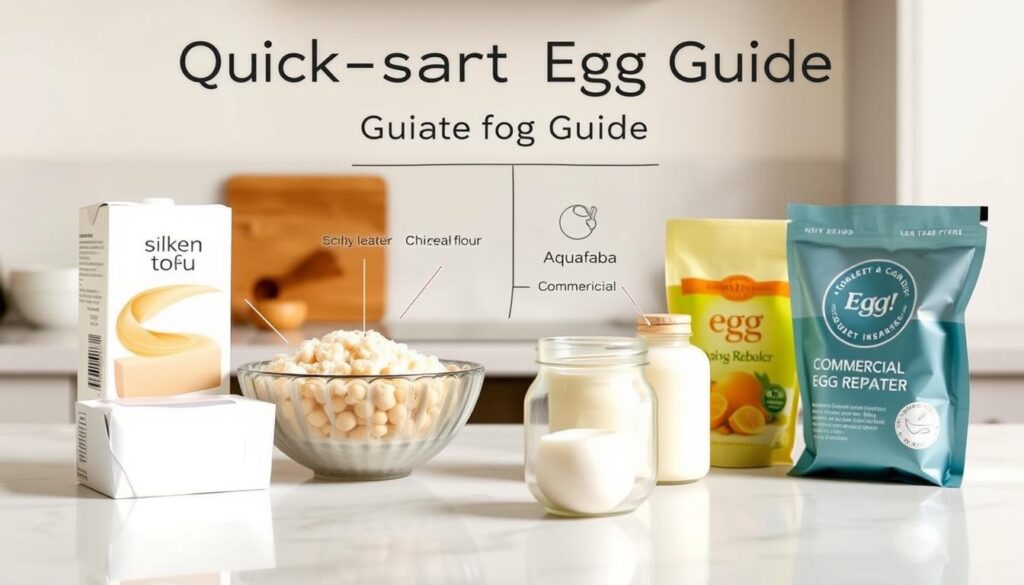
| Goal | Best option | Ratio / tip |
|---|---|---|
| Maximum lift cakes | Aquafaba or soda+vinegar | 3 tbsp aquafaba = 1 egg or 1 tsp baking soda + 1 tbsp vinegar |
| Binding & chew cookies | Flax/chia gel | 1 tbsp ground + 2.5–3 tbsp water per egg chill dough if spreading |
| Neutral moisture muffins | Applesauce or mashed banana | 1/4 cup per egg use banana for added flavor |
Savory vegan egg options you can scramble today
Need a quick, savory scramble for breakfast or a sandwich? Below are reliable choices from ready made liquids and powders to simple pantry based scrambles you can cook in minutes.
Just Egg is pour from bottle convenience. Shake, pour into an oiled skillet, and scramble like conventional eggs. It cooks in minutes and delivers a familiar taste, but the labeled 3 tablespoon serving and ~$7.99 price can add up for families.
Follow Your Heart VeganEgg
VeganEgg arrives as a powder you whisk with cold water to form a scramble ready mixture. It costs about the same as liquids ~$7.99.
The powder can smell strongly sulfuric and testers noted a rubbery, squishy texture in the pan.
Tip: Whisk just before cooking and watch texture some find the mouthfeel off putting.
Tofu scramble
Use firm tofu for curd like texture silken tofu is too watery unless you cook off moisture and accept a softer result.
- Season boldly: onion, garlic, turmeric, paprika, nutritional yeast.
- Add kala namak sparingly at the end for an eggy aroma.
Chickpea scramble
Whisk chickpea flour with water or broth to a pourable batter, then cook like a thin pancake and break into curds.
This soy free option is budget friendly bags often under $3 but yields a denser, doughy bite compared with tofu or liquid mixes.
| Option | How to use | Pros | Cons |
|---|---|---|---|
| Just Egg liquid | Shake & pour cook in oiled skillet | Fast, egg like taste, ready in minutes | Higher cost per serving packaged |
| VeganEgg powder | Whisk powder with cold water | Shelf stable, portable powder | Strong sulfur notes rubbery texture for some |
| Firm tofu scramble | Crumble firm tofu sauté with spices | Whole food protein, curdy texture | Needs bold seasoning needs draining |
| Chickpea flour scramble | Mix flour + water/broth cook and break into curds | Very economical soy free | Denser, pancake like bite |
Kala namak black salt adds an eggy aroma. Sprinkle a bit at the end of cooking to preserve its volatile sulfur notes. Avoid extra on powdered mixes that already include it.
Plant Based Egg Substitutes for baking with ratios and best uses
Use these tested ratios to replace one egg in a wide range of baked goods without guesswork. The short notes below give measurements and quick tips so you can pick the best option for cakes, cookies, or custardy desserts.
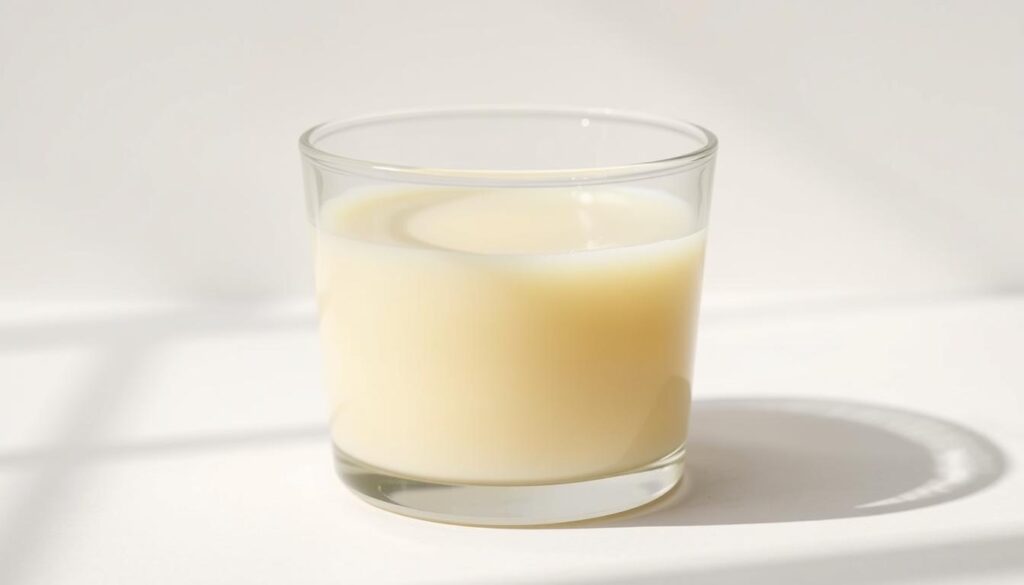
Aquafaba
Ratio: 3 tablespoons aquafaba = one egg 1 Tbsp yolk, 2 Tbsp white, 3 Tbsp whole .
Lightly whisk 45–60 seconds before folding into batters. For stiff peaks, whip 6–10 minutes with a pinch of cream of tartar.
Flax egg
Ratio: 1 tablespoon ground flax + 2.5–3 tablespoons water rest ~15 minutes.
This gel is a strong binder for cookies, brownies, pancakes, and muffins and adds a gentle chew.
Chia egg
Whole chia seeds hydrate like flax. Use the same ratio and choose white seeds to reduce visible specks in light crumb recipes.
Mashed banana or applesauce
Ratio: 1/4 cup purée per egg. Banana brings sweetness and flavor applesauce stays neutral.
Add 1/2 teaspoon baking powder if you need more lift to avoid a dense crumb.
Chickpea flour slurry
Ratio: 3 tablespoons chickpea flour + 3 tablespoons water 4 Tbsp each for extra large one egg .
This gives protein rich structure for cookies, muffins, French toast, and helps with browning.
Silken tofu
Ratio: 1/4 cup blended silken tofu per egg.
Use for dense, custard like desserts brownies, cheesecakes, and pies to add body and moisture without graininess.
- Match function to recipe: aquafaba for lift, flax/chia for binding, purées for moisture, chickpea slurry for structure, silken tofu for custardy texture.
- Taste small batters and note ratios that work for your recipes to repeat results reliably.
Advanced swaps and stabilizers for consistent vegan baking
Targeted swaps and small additions can turn a variable batter into a dependable cake or custard. Use these techniques when you need predictable lift, set, or structure without eggs.
Baking soda + vinegar for lift: Mix 1 teaspoon baking soda with 1 tablespoon vinegar per egg equivalent to generate fast CO2. This combo gives quick rise for fluffy layer cakes and cupcakes. Work quickly and bake within minutes to lock the lift.
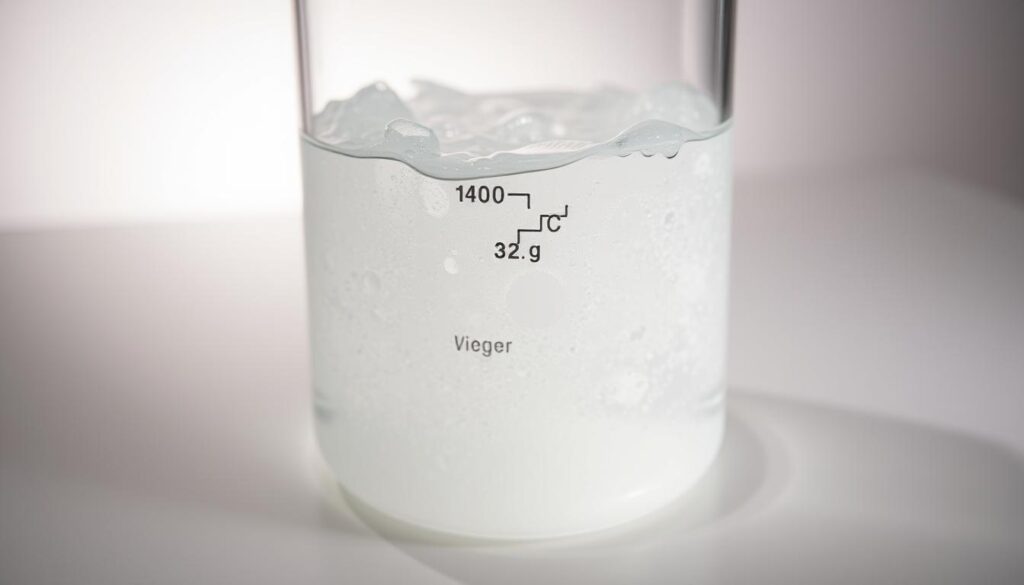
Cornstarch slurry for custards and curds
Whisk 1 tablespoon cornstarch with 3 tablespoons water into the base. Cook gently until glossy it will firm as it cools. Tapioca or arrowroot work similarly for clearer gels.
Psyllium, oats, and aquafaba handling
For stronger gel than flax, mix 1 teaspoon whole psyllium or 1/2 teaspoon ground with 3 tablespoons water. It creates a robust network for pastries and denser cakes.
Make an economical binder with 2 tablespoons oats plus 3 tablespoons boiling water. Pulse smooth for a finer crumb in cookies and muffins.
If aquafaba won’t whip, reduce the brine over gentle heat to concentrate solids, cool, then whip 6–10 minutes. Add a pinch of cream of tartar to stabilize peaks like egg whites for reliable structure in meringues and delicate sponges.
- Use baking powder alongside soda+vinegar when recipes need sustained rise.
- Measure water in slurries precisely too much flattens cakes and gums crumbs.
Decision framework: match substitute to recipe type and texture
Sort your recipe into one of three types airy cakes, hearty quick breads, or binding heavy cookies before picking an alternative. This simple classification speeds choices and improves results.
Light cakes
If rise and air matter, use foamed aquafaba or a soda + vinegar chemical lift. Fold gently to protect trapped air and preserve delicate texture.
Hearty quick breads and muffins
Choose moisture forward options and modest lift. A mix of flax gel plus a bit of baking soda gives tall domes without dryness. Banana or blended tofu adds body and creaminess for dense breads.
Cookies
Prioritize binding to limit spread. Flax or chickpea slurries keep cookies thick and chewy. If dough spreads, chill it and slightly boost the binder.
Quick checklist:
- Identify the egg’s main role leavening, moisture, or binding.
- Match the function: aerator for cakes, moisture+lift for quick breads, binder for cookies.
- Test one batch, note crumb and rise, then adjust ratios.
Pantry checklist and conversions for U.S. home bakers
A well stocked pantry makes swapping simple and keeps weeknight baking fast. Arrange a few versatile items so you can adapt a recipe without running to the store.
- Binders & aerators: whole flax grind as needed and chia for gels, aquafaba from canned chickpeas, cornstarch and oats for slurries. Measure by tablespoon and cup for consistent hydration with water.
- Flours: keep standard all purpose and chickpea flour for high protein binding. Label jars with quick ratios so a recipe adapts in seconds.
- Fruit purées: 1/4 cup banana or applesauce per egg equivalent add a dash more baking powder if muffins need extra lift without extra sugar.
- Dairy alternatives: unsweetened non dairy milk for slurries and glazes, plus plain soy yogurt for tender quick breads and snack cakes.
- Chemical leaveners & dating: fresh baking soda and baking powder mark open dates and replace every 6–12 months for reliable rise.
- Tofu options: buy shelf stable silken tofu for desserts and keep firm tofu refrigerated for scrambles and savory recipes.
- Labeling: mark small jars ground or whole to avoid mix ups grind seeds just before use for peak gel performance.
- Savory add ins: kala namak and turmeric live on the breakfast shelf for color and that egg like aroma in scrambles.
| Swap | Ratio per one egg | Use |
|---|---|---|
| Aquafaba | 3 tablespoons | Whipping, aeration |
| Ground flax | 1 tablespoon + 2.5–3 tablespoons water | Binding for cookies, muffins |
| Chia | 1 tablespoon + 3 tablespoons water | Thick gels, neutral flavor |
| Cornstarch | 1 tablespoon + 3 tablespoons water | Thickened custards, glazes |
Organize items for muffins, cakes, and pancakes together so weeknight baking stays fast and accurate. A tidy pantry saves time and prevents costly recipe mistakes.
Timing, texture, and taste: troubleshooting common pitfalls
A few focused adjustments can rescue a dense cake or a runny scramble in minutes.
Rubbery or dense crumb in baked goods
Reduce heavy purées like banana or applesauce by a tablespoon or swap some purée for a teaspoon of oil to keep moisture without tightening crumb.
A slight boost of chemical lift helps. Add 1/4 teaspoon more baking powder per batch, but avoid overmixing flour. Overworking develops gluten and makes cakes rubbery.
If loaves sink, confirm leavener is fresh and bake immediately after activating soda + acid or folding in foamed aquafaba. Delay lets gas escape before the oven sets the structure.
Scramble texture too wet or too doughy
If a tofu scramble is wet, cook a few more minutes over medium, pressing with a spatula to evaporate water. For chickpea batter that feels doughy, thin the mixture slightly and stir more to form smaller curds.
Adjust heat and time rather than adding liquids that change the taste or cooking time.
Overly eggy smell or off flavors
Cut back on black salt in commercial mixes and ventilate the pan while cooking. Balance aroma with fresh herbs, green onions, or peppers to improve overall taste.
If brownies or muffins turn out dry, add a teaspoon of oil or a tablespoon applesauce and shorten bake time by one or two minutes. Keep notes on each recipe’s adjustments so you nail the texture next time.
Conclusion
Identify the function you need ift, bind, moisture, or set and match it to the right tool. That simple rule delivers reliable results with vegan egg substitutes and keeps texture front and center.
,Keep a short pantry list: 3 tablespoons aquafaba for airy batters flax or chia gels for cookies 1/4 cup banana or applesauce for moist crumbs and 1/4 cup silken tofu for custardy treats.
For savory mornings choose a ready vegan liquid or crumble firm tofu with spices. Use soda + acid, oats, or chickpea slurries for budge friendly substitute baking. Measure by cup and tablespoon to avoid overhydration.
Note what works in each recipe, then scale with confidence for holidays, school treats, and weeknight meals.

